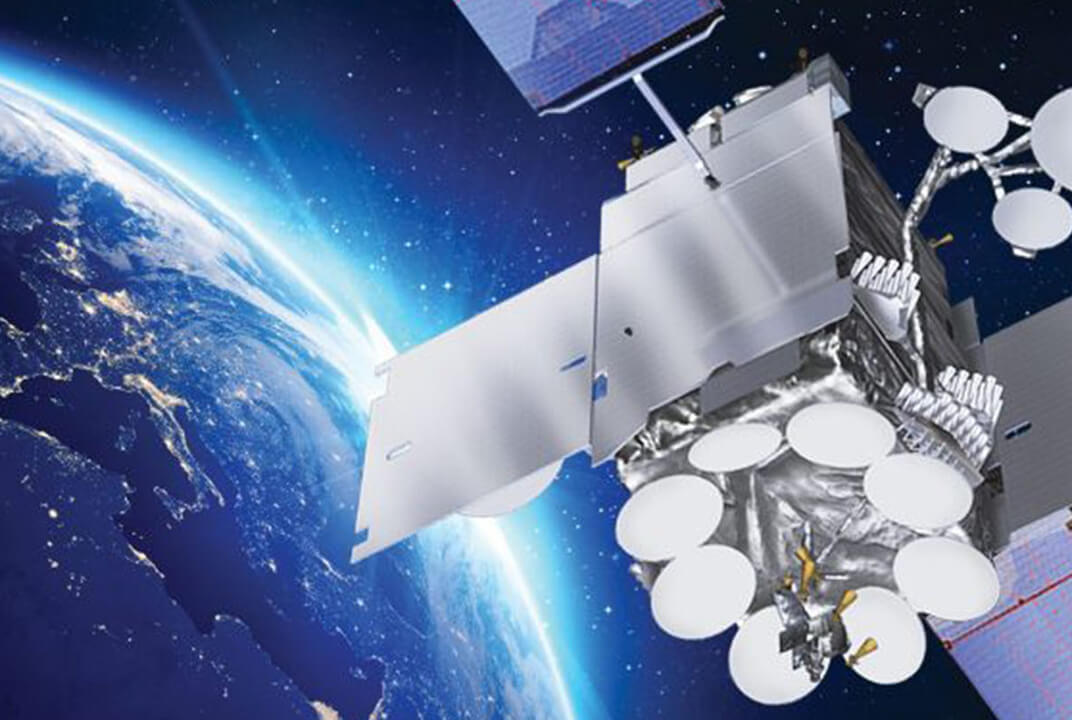Insight | How Global Xpress is emerging as a top option for VIPSAMs
How Global Xpress is emerging as a top option for VIPSAMs
Government
Rebecca M. Cowen-Hirsch, Inmarsat Senior Vice President for Government Strategy and Policy, U. S. Government Business Unit, describes how Very Important Person Special Air Missions (VIPSAM) are taking advantage of Global Xpress Ka-band.
Whether they are on Air Force One, a Special Air Mission or a Helicopter Special Mission, U.S. government senior leaders, Unified Combatant Commanders (COCOMs) and other governmental Very Important Persons (VIPs) seek constant connectivity to mission command centers, the Pentagon and perhaps even the White House. These leaders require the ability to perform the duties of their respective offices even while travelling by air.
Today’s event-driven global reality requires immediate readiness for the unexpected during highly mobile, asymmetrical engagements, creating unique challenges for the leadership team and the special purpose missions supported by the VIP Special Airlift Missions (VIPSAM) fleet. Fortunately, readily available commercial satellite communications (SATCOM) deliver the needed communication mission support, with optimal access, security, reliability and resiliency – on-demand both to and from the aircraft, wherever their flights go.
The mission planners and experts for the VIPSAM missions have recognized that Ka-band from commercial providers is the right solution for their future SATCOM requirements. With Inmarsat’s Global Xpress network, they now receive the enhanced benefit of interoperability with government operated SATCOM. These units’ mission require their fleet of aircraft must be ready to go anywhere/anytime while following strict protocols, depending upon mobile, data-intensive applications – like secure voice, data and video. Reliable high throughput worldwide – a core component of commercial Ka-band – proves critical for trusted performance.
From better security and reliability to unprecedented interoperability with military satellite resources, Ka-band has been demonstrated to meet the demands of future of satellite communications at an affordable rate.
Inmarsat: Leading by doing
Inmarsat is proud to take a lead role here: Our Global Xpress network is the first and only end-to-end wideband commercial Ka-band network from a single operator that spans the world. It has excelled during testing – transmitting real-time, high-definition video data up to 30 megabits per second without signal distortion or loss during in-orbit testing.
Global Xpress allows users to leverage COMSATCOM for core functions and in-route operations, while seamlessly integrating with MILSATCOM to provide even higher throughput and performance for optimal redundancy, diversity, protection, scalability and global portability – the ultimate resiliency force-multiplying approach. This adds greater efficiencies and responsiveness to meeting the VIPSAM requirements.
Global Xpress is designed with maximum worldwide mobility in mind, taking full advantage of spot beam architecture, unlike historical transponded systems that distribute power spread across a limited geographic beam, with its typical attended “hot” and “cold” spots for data transmission.
The Inmarsat Ka-band architecture of Global Xpress is implemented through smaller “spot” beams in a honeycomb configuration that are figuratively ‘stitched’ together, which establishes consistency of power distribution, and, therefore, data rate assurance across the entire field of view of each satellite Thus, users will not encounter data drop-offs previously experienced on fixed satellite beams with inconsistence performance. And when there are demand surges, Global Xpress directs its spot beams to provide more bandwidth than any other commercial satellite system into the location of need.
As the U.S. government is looking at enterprise-level, integrated architecture to fulfil their requirements and enhance flexibility of operations, they can take advantage of Inmarsat Global Xpress managed mobility service – SATCOM as a Service – as well as wideband Mil-Ka leased capacity as part of their own independent network:
Inmarsat provides Global Xpress to the U.S. government as a managed service everywhere – SATCOM as a Service allows for on-demand access to satellite capability, end-to-end. With no infrastructure charges or R&D investment on their part, customers travel from one location to another, and simply “plug in” to get what they need, when they need it. With solid service level agreements and committed information rates, the quality of the acquired service is assured worldwide.
- Global Xpress can be implemented as part of an open SATCOM architecture as it offers lease capacity on any waveform as well as commercial off-the-shelf technology. Defense users access and control wideband capacity as part of their own independent network, in the same frequency band as the government operated system. They can steer capacity anywhere in the world to augment WGS coverage, using existing terminals. They have the option of connecting their military-Ka SATCOM terminals through any Department of Defense-certified waveform to the same destined point of presence, or through Inmarsat-provided secure enclaves built at Inmarsat’s Satellite Access Stations (SAS).
- For added operational options, Inmarsat can support the Protected Tactical Waveforms (PTW), to deliver broader protection and more anti-jam (A/J) resistance, and to enhance diversity, resiliency and protection. Global Xpress military Ka-bandwidth affords the largest swath of bandwidth (greater than WGS and other commercial satellite systems) channels in which to spread the variety of PTWs, and has been successfully tested over-the-air on Inmarsat-5 with great success.
The VIPSAM fleet must accommodate the most mission-critical officials and operations, often under the most stressful of environments. For them, satellite connectivity that is secure and reliable at all times is not a luxury – it is a necessity. With Global Xpress, they can proceed with complete confidence that their data-intensive applications will receive seamless support, so they can focus on the job at hand. For further information, please contact us.
About the author
Rebecca M. Cowen-Hirsch is Inmarsat Senior Vice President for Government Strategy and Policy in the United States Government (USG) Business Unit, based in Washington. Ms. Cowen-Hirsch brings 25 years of defense, aerospace, and executive leadership experience to Inmarsat. As a decorated member of the Senior Executive Service (SES) in the U.S. Department of Defense, she served as the Program Executive Officer for SATCOM, Teleport and Services at the Defense Information Systems Agency (DISA) and in several key SES executive positions including the first Vice Component Acquisition Executive for DISA, with executive management responsibility for the acquisition oversight and horizontal integration of DISA’s products, services, and programs. Ms Cowen-Hirsch established the Defense Spectrum Office, serving as its first Director where her responsibilities included the development of national security spectrum strategic plans and policy, and national and international negotiation of defense spectrum issues. Her broad defense career ranged from systems engineering, experimental flight test, program management, spectrum management, and a wide range of executive leadership positions. Ms. Cowen-Hirsch was a rated experimental flight test engineer; was the first female civilian Mission Commander for the Advanced Range Instrumentation Aircraft (ARIA) mission, and was the recipient of an Exemplary Service Medal for her years of selfless service to the Department of Defense. Ms Cowen-Hirsch has a Bachelor of Science Degree in Electrical Engineering, conducted post-graduate studies in Engineering Management, and is a graduate of the University of Tennessee Space Institute Experimental Flight Test Program; the DoD’s Acquisition Management Program; and the Cambridge Senior Executive Leadership Program.


